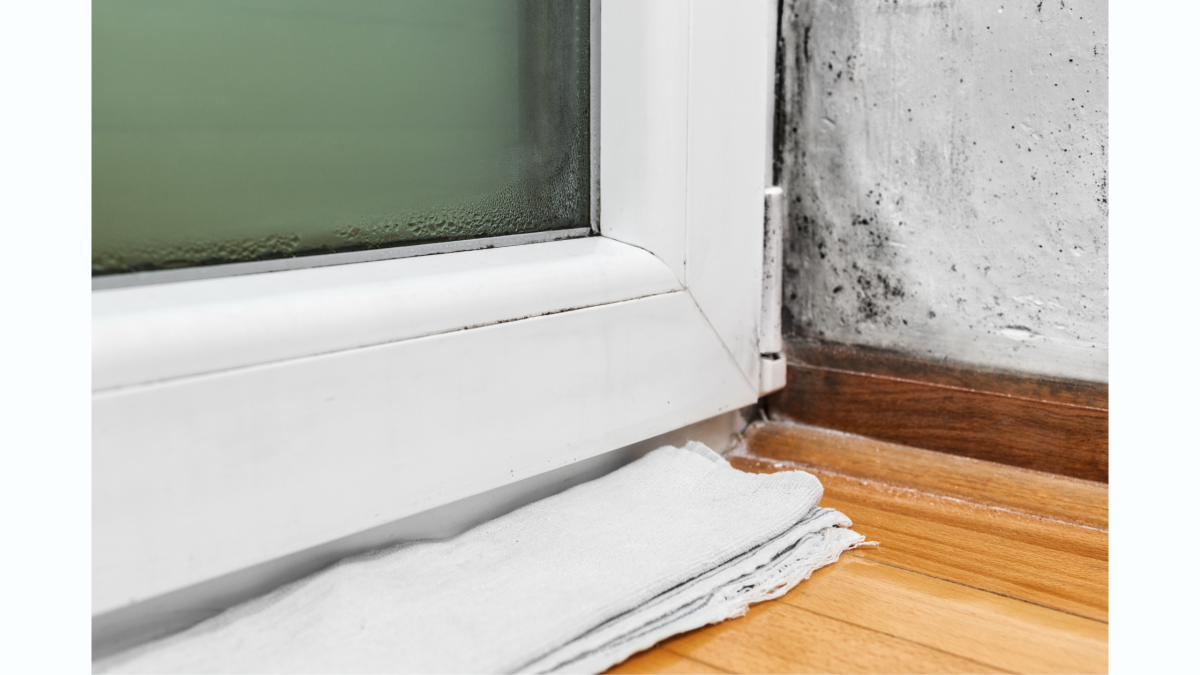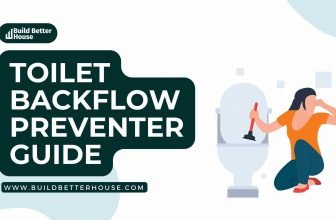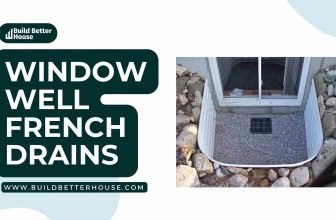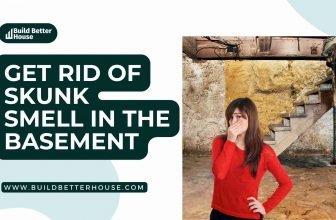Mold in Basement: Effective Solutions for Prevention and Removal

Basements are often prone to mold growth due to their damp, dark conditions and proximity to groundwater. Many homeowners face the challenge of identifying and dealing with mold in their basements, as it can affect their home’s structural integrity and indoor air quality. Understanding the causes and signs of mold growth, along with the proper methods for removal and prevention, is crucial in maintaining a healthy living environment.
Mold thrives in moist, humid conditions and can go unnoticed until it becomes a significant issue. This is especially true in basements where inadequate ventilation and potential leaks create the perfect breeding ground for mold. Not only can mold cause damage to your home, but it can also lead to various health issues, including respiratory problems and allergic reactions.

In order to address mold growth in your basement, it is important to learn how to identify it and determine whether the removal process can be handled independently or if professional help is necessary. Implementing preventive measures and regular maintenance can help minimize the risk of mold growth, ultimately safeguarding your home and the health of its occupants.
Key Takeaways
- Mold grows in basements due to damp, dark conditions, and poor ventilation.
- Identifying and removing mold is essential to maintain a healthy living environment.
- Prevention techniques and regular maintenance can minimize mold growth risks.
Causes of Mold Growth in Basements
Mold growth in your basement can become a serious issue, causing damage to your property and potentially affecting your health. Several factors can contribute to the development of mold in basements. Understanding these factors will help you prevent mold growth and maintain a safe living environment.
Moisture is one of the main culprits behind mold growth in basements. Your basement might accumulate moisture from various sources, such as leaks, condensation, and high humidity levels. Rainwater can seep into your basement if there is improper grading, or if gutters and downspouts are not directing water away from your home. Furthermore, floods caused by heavy rains or overflowing rivers can introduce large amounts of water into your basement, creating a perfect environment for mold growth.
Humidity also plays a significant role in the formation of mold in basements. High humidity levels can be caused by factors such as a poorly functioning HVAC system or the use of humidifiers. When the air in your basement is overly humid, it creates a damp environment where mold can thrive.
Leaks can introduce water into your basement and cause mold growth. Some common sources of leaks include plumbing issues, cracks in the foundation, and gaps around windows or doors. Make sure to regularly check for and repair any leaks in your basement to prevent mold from taking hold.
Condensation can contribute to moisture build-up in basements. Cold surfaces, such as basement walls, windows, and pipes, can cause water vapor from the air to condense, leading to damp conditions. Insulating these surfaces and maintaining a comfortable indoor temperature can help prevent condensation and reduce the risk of mold growth.
A lack of proper airflow in your basement can also contribute to mold growth, as stagnant air traps moisture and prevents it from evaporating. Ensuring adequate ventilation in your basement, such as installing exhaust fans or using dehumidifiers, can help to maintain healthy humidity levels and prevent mold from developing.
In summary, keep an eye on potential issues like moisture, humidity, leaks, water seepage, and condensation that may contribute to mold growth in your basement. By implementing appropriate preventive measures and maintaining proper conditions, you can create a healthier living environment and prevent mold problems in your basement.
Identifying Mold in Basements
Mold in basements can be a challenging issue to tackle and can lead to various health problems if left untreated. Identifying mold is an essential step in addressing the issue before it worsens. Here’s a guide to help you recognize signs of mold in your basement:
First and foremost, trust your sense of smell. A musty odor is often the first indication of mold growth. This smell is due to the release of microbial volatile organic compounds (MVOCs) as mold breaks down organic material. If you notice a persistent, stale odor in your basement, it’s time to investigate further.
Visual inspection is crucial in detecting mold. Look for discolored spots on surfaces like walls, ceilings, and flooring. Mold can appear in various colors, such as black, green, brown, or white. Pay particular attention to areas with water stains or any other signs of past water damage, as these are prime locations for mold growth.
Mildew, a less dangerous type of fungus, can be commonly mistaken for mold. While both display similar characteristics, mold generally has a more robust texture and a more distinctive smell. Typically, mildew can be easily wiped off surfaces, whereas mold might be more challenging to remove.
Mold spores are microscopic particles and not visible to the naked eye. Visible mold growth indicates a large number of mold spores in the area. It’s essential to tackle the mold issue as soon as possible, as mold spores can become airborne, spreading to other areas of your home or causing health issues.
An essential aspect of identifying mold in your basement is examining hidden spots. Mold thrives in damp, dark environments, often growing in places that are less easily seen. Inspect areas behind appliances, furniture, and storage items, as well as any gaps between walls and floors.
By familiarizing yourself with these key indicators, you can confidently identify mold in your basement and take appropriate action to address the issue. Remember to be thorough in your inspection and trust your instincts. Early detection of mold issues can save you time, effort, and potentially significant health problems in the long run.
Health and Safety Concerns
Mold growth in your basement can pose various health and safety concerns. Exposure to mold can cause symptoms like stuffy nose, sore throat, coughing, wheezing, burning eyes, and skin rash. If you suffer from allergies or asthma, you may experience more severe reactions. Immune-compromised individuals and those with chronic lung disease are at higher risk of lung infections from mold exposure.
It’s crucial to take proper precautions when dealing with mold in your basement. Following are some recommendations to ensure your safety while handling mold:
- Always wear personal protective equipment (PPE) when working in a mold-infested area. PPE includes safety glasses, a HEPA N95 mask at a minimum (or a P100 mask for better protection), hooded disposable coveralls, latex or latex-substitute gloves, and shoe covers.
- Keep the work area well-ventilated to prevent the accumulation of mold spores and reduce the risk of inhaling them. Make sure to seal-off the workspace from the rest of your home to prevent the spread of mold spores to other areas.
- To minimize the risk of mold-related health issues, eliminate the source of dampness in your basement. Fix any water leaks, and use a dehumidifier if needed to maintain an appropriate humidity level.
Remember, dealing with mold growth in your basement can have serious health and safety implications. Ensuring you’re well-equipped and knowledgeable about mold prevention and removal strategies is essential. Don’t hesitate to seek professional help if you’re unsure about the proper handling and removal of mold in your home.
DIY Mold Removal and Remediation
Mold in your basement can be unsightly and potentially harmful to your health. Tackle the problem by following these straightforward steps for DIY mold removal and remediation.
First, gather the necessary tools and supplies, such as a pry bar, bleach, vinegar, baking soda, soap, and protective gear like gloves and a mask. Make sure to ventilate the area by opening windows or using fans, as this will help prevent mold spores from spreading throughout your home.
Begin by identifying and removing any items damaged by mold. Use a pry bar to carefully remove any mold-infested materials, taking care not to damage other areas. Once the damaged items are removed, it’s time to address the mold on surfaces.
There are a variety of home remedies you can use to get rid of mold effectively. Here are some options:
- Bleach: Create a solution of one-part bleach to ten parts water. Make sure to wear gloves and a mask when handling bleach, as it can be harmful to your skin and lungs. Lightly scrub the affected areas with a brush or sponge, then rinse thoroughly with water.
- Vinegar: Mix equal parts water and white vinegar in a spray bottle. Spray the solution onto the moldy areas and let it sit for about 30 minutes. Afterward, scrub off the mold with a brush or sponge and rinse the area with water.
- Baking soda: Combine 1 part baking soda with 2 parts water to form a paste. Apply this paste to the moldy surfaces and let it sit for at least 15 minutes. Once it has had time to work, scrub away the mold with a brush or sponge and rinse the area with water.
- Soap: Mix a few drops of dish soap with water and scrub the moldy area using a brush or sponge. Once the mold is removed, rinse the area with water and allow it to air dry.
Remember, after completing the mold removal process, it’s essential to address the underlying problem that caused the mold to grow in the first place. Check for leaks, moisture build-up, or poor ventilation in your basement, and make the necessary repairs to prevent future mold growth. By taking these proactive steps, you can confidently and effectively get rid of mold in your basement.
Professional Mold Remediation
When dealing with mold in your basement, it’s important to consider hiring a professional mold removal service. These experts, known as mold remediation specialists, are trained and certified to deal with mold problems effectively and safely.
As mold can pose health risks, you want to ensure that it is removed thoroughly and properly. A professional mold remediation specialist has the experience and knowledge to assess the extent of the mold growth in your basement and develop an appropriate plan for removal and prevention.
It’s essential to note that mold remediation is regulated by the Environmental Protection Agency (EPA). Professionals must follow strict guidelines and procedures when dealing with mold to ensure safety and effectiveness. This includes the use of personal protective equipment, like masks and gloves, as well as following specific containment and disposal protocols.
Here are some key factors to consider when seeking professional help for mold removal:
- Certification: Look for technicians who have received certification from organizations such as the Institute of Inspection, Cleaning and Restoration Certification (IICRC) or the National Association of Mold Professionals (NAMP).
- Experience: Choose a company with a proven track record and experience in basement mold remediation.
- Cost: Mold remediation costs can range from $500 to $4,000 for basement mold removal, and up to $30,000 for large, complex projects. Be sure to request quotes from multiple professionals to find the best fit for your budget.
- Insurance and References: Ensure the mold remediation company is properly insured and provides references from satisfied customers.
Remember, dealing with mold in your basement is not something to take lightly. Engaging the services of a professional mold remediation specialist is a smart investment for the safety and well-being of you and your family.
Preventing Mold Growth in Basements
Mold growth in basements is a common issue for homeowners, and preventing it is essential for maintaining a healthy living environment. Here are some effective ways to prevent mold growth in your basement.
Firstly, keep your basement dry. Make sure there are no leaks or seepage in the foundation or walls. Check for any cracks and promptly repair them. Waterproofing your basement is crucial in preventing water from entering and causing mold issues.
Another essential step in preventing mold growth is controlling the humidity levels. Use a dehumidifier to maintain a humidity level below 50%. Regularly monitor and adjust the humidity settings as needed to ensure proper humidity control.
Proper ventilation is crucial to prevent mold growth in basements. Ensure that there is adequate airflow and temperature control, allowing fresh air to circulate and properly regulate the environment. Invest in a good exhaust fan or air exchange system to improve ventilation in your basement.
Monitor the temperature as well. Mold usually thrives in temperatures between 60-80°F (15-26°C). Keeping your basement’s temperature slightly above or below this range can help discourage mold growth.
In addition to these measures, focus on improving the drainage system around your home. Clean your gutters regularly to prevent clogs and ensure that water is directed away from your home’s foundation. Install a proper drainage system if necessary to avoid standing water near your home.
To sum up, preventing mold growth in basements largely revolves around maintaining a dry, well-ventilated space with controlled humidity and temperature levels. Regularly inspect and maintain your home’s foundation, drainage system, and gutters to ensure a mold-free basement.
Maintenance Tips and Checklist
Regular maintenance is crucial in preventing mold growth in your basement. By following these tips, you can ensure a clean and mold-free environment.
1. Conduct Regular Inspections: Examine walls, floors, ceilings, furniture, and carpets for signs of moisture or mold. Pay special attention to plumbing, the HVAC system, laundry rooms, and bathrooms as these areas are more prone to water damage and mold growth.
2. Keep Your Basement Dry: Ensure proper drainage around your home by maintaining gutters, downspouts, and grading. Make sure your basement windows provide adequate ventilation and use a dehumidifier if needed to reduce humidity levels.
3. Clean and Disinfect Surfaces: Regularly clean walls and floors with a solution of soap and water, or a mixture of one cup of bleach to one gallon of water. Focus on areas with visible mold or where moisture accumulates. Always wear protective gear, such as gloves and a mask, while cleaning.
4. Examine Your Furniture and Carpets: If your basement contains upholstered furniture or carpets, vacuum them regularly and spot clean any visible mold or mildew. Store items on shelves or consider using vapor barriers to prevent moisture absorption.
5. Maintain Your Plumbing and HVAC System: Check for leaks in pipes or around appliances, and repair any issues as soon as possible. Inspect and clean the HVAC system, making sure to replace filters regularly and keep the drip pans dry.
6. Monitor Bathrooms and Laundry Rooms: Properly vent bathrooms and laundry rooms to the outside, and clean and disinfect surfaces regularly. Avoid leaving wet towels or clothes on the floor, and always use exhaust fans when showering or running the dryer.
By adhering to this maintenance checklist, you can create a comfortable and mold-free basement for your home.
Frequently Asked Questions
Can mold in the basement affect the rest of the house?
Yes, mold in the basement can affect the rest of your house. Mold produces spores that can travel through the air and spread to other parts of your home. Proper ventilation and addressing the source of the moisture can help prevent the spread of mold.
What is the most effective way to remove mold from basement walls?
The most effective way to remove mold from basement walls is to use a solution of water and bleach or a commercial mold remover, scrubbing the affected area with a stiff brush. After cleaning, make sure to dry the area thoroughly and address the source of the moisture to prevent mold from coming back.
How can I prevent mold growth in my basement?
To prevent mold growth in your basement, you should address any leaks or cracks in the walls, maintain proper ventilation, and use a dehumidifier if necessary. Insulating your water pipes can also help keep moisture levels down.
Are there any health risks associated with mold in the basement?
Mold in your basement can pose health risks, especially for people with allergies, asthma, or compromised immune systems. Exposure to mold can cause allergic reactions, respiratory problems, and general irritation.
What products are recommended for mold removal in basements?
For mold removal in basements, you can use a solution of water and bleach or a commercial mold remover. There are also mold-resistant paints available for use on walls and other surfaces to help prevent mold growth. Make sure to follow the product instructions for best results.
Do dehumidifiers help with mold issues in basements?
Yes, using a dehumidifier in your basement can help with mold issues. By maintaining a relative humidity level below 60%, you can create an environment where mold is less likely to grow. A dehumidifier can significantly reduce moisture levels, helping prevent mold growth and improving the overall air quality in your basement.






